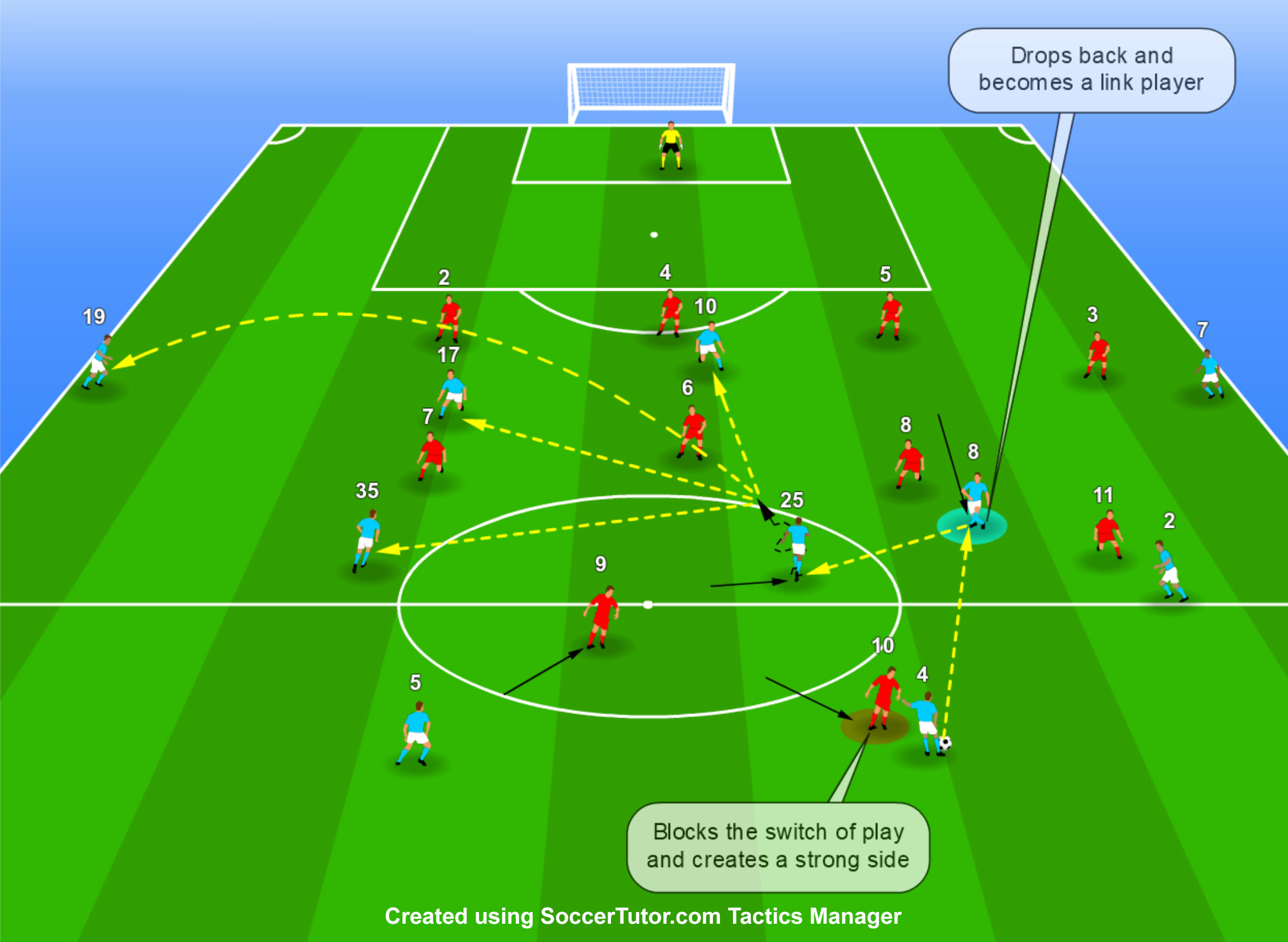
From Sideline to Soundwave: How to Start a Football Podcast & Score Big (Essential Facts You Need to Know)
The roar of the crowd, the tactical brilliance, the heartbreak of a last-minute goal – football ignites a passion unlike any other sport. If your living room commentary often outshines the professionals, and your friends are tired of your tactical breakdowns, perhaps it’s time to take your love for the beautiful game to the airwaves. Starting a football podcast is a fantastic way to share your insights, connect with fellow fans, and even build a community.
But how do you transform that fervent passion into a polished audio experience? It’s more than just pressing record. This comprehensive guide will lay out the essential facts and actionable steps you need to kick off your very own football podcast, ensuring you’re well-equipped to score big in the competitive world of audio content.
The Foundation: Why & What
Before you even think about microphones, you need a solid game plan.
Fact 1: Niche Down – The Smaller the Pond, the Bigger the Fish.
The world doesn’t need another generic "football podcast." The most successful podcasts aren’t broad; they’re hyper-focused.
- Examples of Niches:
- Specific League/Team: "The Premier League Tactical Breakdown," "All Things Manchester United," "Serie A Storylines."
- Player Focus: "The Messi vs. Ronaldo Debate," "Rising Stars of La Liga."
- Tactics & Analytics: Deep dives into formations, pressing schemes, xG.
- Fantasy Football: Weekly tips, waiver wire pickups, draft strategies.
- Football History: Exploring legendary teams, forgotten players, classic matches.
- Women’s Football: Focusing on the WSL, NWSL, or international tournaments.
- Cultural Aspect: Football and society, fan culture, global impact.
- Specific Region/Country: "The Brazilian Football Chronicles," "German Bundesliga Diaries."
- Why it Matters: A niche helps you stand out, attracts a dedicated audience, and makes content creation easier by narrowing your focus. It’s easier to become an authority in a specific area than a generalist.
Fact 2: Define Your Voice & Angle – What’s Your Commentary Style?
Once you have your niche, how will you approach it?
- Analytical & Deep Dive: For the tactical masterminds.
- Humorous & Lighthearted: For those who enjoy the lighter side of the game.
- Fan Perspective: Raw, passionate, and relatable.
- Interview-Based: Bringing on guests (journalists, ex-players, fellow fans).
- Debate-Driven: Presenting opposing viewpoints on hot topics.
- Storytelling: Narrating historical events or player journeys.
- Why it Matters: Your voice creates your brand. Consistency in tone and approach helps listeners connect with you and know what to expect.
Fact 3: Know Your Audience – Who Are You Talking To?
Are they hardcore stats geeks, casual fans, fantasy football enthusiasts, or new followers of women’s football? Understanding your target listener will inform your language, content depth, and even your marketing strategy.
- Actionable Tip: Create an "avatar" of your ideal listener. What are their interests? What other podcasts do they listen to? This helps tailor your content directly to them.
The Blueprint: Planning & Content Strategy
A great podcast isn’t just spontaneous chatter; it’s well-planned.
Fact 4: Structure is King – Every Match Needs a Formation.
Don’t just hit record and ramble. A consistent structure makes your podcast easy to follow and professional.
- Common Structure:
- Intro Music & Welcome: Sets the tone.
- Opening Hook: Grab attention with a hot take or exciting news.
- Main Segments (2-4): Each segment covers a specific topic related to your niche.
- Listener Interaction (Optional): Q&A, shout-outs.
- Call to Action: Ask listeners to subscribe, review, or follow you on social media.
- Outro Music & Farewell.
- Why it Matters: Predictability is comforting. Listeners appreciate a consistent flow.
Fact 5: Content Calendar & Consistency – The Schedule is Your Strategy.
Sporadic releases kill momentum. A consistent schedule is vital for building an audience.
- Actionable Tip: Decide on a realistic release schedule (e.g., weekly, bi-weekly). Plan your topics weeks or even months in advance. Use a simple spreadsheet or a project management tool (Trello, Asana) to keep track. This avoids last-minute panic and ensures a steady stream of content.
Fact 6: Episode Formats – Solo, Co-Host, or Guest?
- Solo: You’re the star. Great for deep dives and personal opinions. Requires strong speaking skills and self-discipline.
- Co-Host: Dynamic conversations, different perspectives, shared workload. Chemistry is crucial.
- Interview: Brings fresh voices and expert opinions. Requires good interviewing skills and guest outreach.
- Why it Matters: Different formats suit different content and personalities. Consider what works best for your niche and your strengths.
Fact 7: Storytelling & Engagement – Beyond Just Stats.
While stats are important, compelling stories and engaging commentary keep listeners hooked.
- Actionable Tip: Don’t just report scores. Discuss the narrative behind the results, the impact of a transfer, or the journey of a player. Ask rhetorical questions, use analogies, and inject your personality.
The Gear: Essential Equipment
You don’t need a professional studio, but quality audio is non-negotiable.
Fact 8: Your Microphone is Paramount – Sound Quality Over Everything.
Listeners will tolerate amateur video, but bad audio is a deal-breaker. Invest in the best microphone you can afford.
- Entry-Level (USB Mics):
- Blue Yeti: Popular, versatile, good for beginners.
- Rode NT-USB Mini: Compact, excellent sound for its price.
- Shure MV7: Hybrid USB/XLR, great sound, built-in headphone jack.
- Mid-Range (XLR Mics – require an audio interface):
- Rode Procaster: Broadcast quality, excellent for voice.
- Shure SM58 (with interface): Industry standard, robust.
- Audio-Technica AT2020 (with interface): Great condenser mic for home studios.
- Why XLR? XLR microphones offer superior sound quality, more control, and are generally more durable. They require an audio interface (like a Focusrite Scarlett 2i2) to connect to your computer.
- Budget Hack: Even a good quality lavalier (lapel) mic connected to your phone can be better than your laptop’s built-in mic.
Fact 9: Headphones Are a Must – Hear Yourself, Hear the Flaws.
You need headphones to monitor your audio as you record. This helps you identify issues like background noise, mic technique problems, or audio clipping before you finish recording.
- Actionable Tip: Any comfortable, over-ear headphones will do. Avoid earbuds as they can pick up ambient noise.
Fact 10: Recording & Editing Software – Your Digital Studio.
- Free Options:
- Audacity: Cross-platform, powerful for basic editing, but has a learning curve.
- GarageBand (Mac only): User-friendly, good for beginners, surprisingly robust.
- Paid/Professional Options:
- Adobe Audition: Industry standard, comprehensive features.
- Logic Pro X (Mac only): Excellent for music and podcasts.
- Riverside.fm / SquadCast: Cloud-based platforms specifically designed for remote interviews, recording separate audio tracks for each participant (crucial for quality).
- Why it Matters: These tools allow you to record, remove errors, add music, and fine-tune your audio.
Fact 11: Acoustic Treatment (Even DIY) – Taming the Echo.
Your recording environment matters as much as your mic. An empty room will sound echoey and unprofessional.
- Actionable Tip: Record in a room with soft furnishings (carpets, curtains, couches, bookshelves). Blankets, pillows, or even a duvet draped over your head can create a surprisingly effective "vocal booth" for a quick fix.
- Why it Matters: Reduces reverb and makes your voice sound clearer and more professional.
The Playbook: Recording & Editing
This is where the magic (and the hard work) happens.
Fact 12: Recording Environment Matters – Silence is Golden.
Find the quietest possible space. Turn off air conditioners, fans, refrigerators, and silence your phone. Close windows to block outside noise.
- Actionable Tip: Record during off-peak hours if possible (e.g., late night, early morning) when there’s less ambient noise from traffic or neighbors.
Fact 13: Microphone Technique – Don’t Yell at the Ref.
- Proximity: Speak directly into the microphone, about 6-12 inches away. Too far, and you’ll sound distant; too close, and you’ll get plosives (harsh "p" and "b" sounds).
- Pop Filter: Use a pop filter (a cheap mesh screen) to eliminate those harsh plosives.
- Consistent Volume: Try to maintain a consistent speaking volume.
- Why it Matters: Good mic technique prevents common audio issues and ensures your voice sounds clear and natural.
Fact 14: Editing is Non-Negotiable – Polish Your Performance.
Even professional broadcasters make mistakes. Editing transforms raw audio into a polished product.
- What to Edit:
- Filler Words: "Um," "uh," "like," "you know."
- Dead Air: Long pauses.
- Mistakes & Stutters: Flubbed lines, re-reads.
- Background Noise: Hums, clicks, accidental sounds.
- Add Intro/Outro Music: Ensure it fades in and out smoothly.
- Transitions: Between segments.
- Why it Matters: A clean, concise podcast is a joy to listen to. It shows professionalism and respect for your listener’s time.
Fact 15: Master Your Audio – The Final Whistle.
After editing, a final pass to "master" your audio is crucial.
- Leveling: Ensure all voices (yours, co-host, guests) are at a consistent volume.
- Compression: Reduces the dynamic range, making loud parts softer and soft parts louder, resulting in a more consistent and impactful sound.
- Normalization: Sets the overall loudness of your episode to an industry standard (typically -16 LUFS for stereo, -19 LUFS for mono).
- Why it Matters: Consistent volume and clear sound prevent listeners from constantly adjusting their volume, leading to a much better listening experience.
The Pitch: Hosting & Publishing
Once your episode is edited, it’s time to share it with the world.
Fact 16: A Podcast Host is Your Home Base – The Stadium for Your Audio.
You can’t just upload an audio file to Spotify. You need a podcast hosting service. These services store your audio files and generate an RSS feed. This RSS feed is what directories like Apple Podcasts and Spotify use to pull your episodes.
- Popular Hosts:
- Buzzsprout: User-friendly, good analytics, helpful support.
- Libsyn: Industry veteran, robust features.
- Transistor.fm: Great for multiple podcasts, private podcasts.
- Anchor (Spotify for Podcasters): Free, integrated with Spotify, but can be limited in features and ownership of your RSS feed.
- Why it Matters: Your host is the backbone of your podcast distribution. Choose one that fits your budget and offers the features you need.
Fact 17: Directories are Your Distribution Network – Where Fans Find You.
Once your podcast is on a host, you submit your RSS feed to major podcast directories.
- Essential Directories:
- Apple Podcasts (formerly iTunes)
- Spotify
- Google Podcasts
- Amazon Music/Audible
- Stitcher
- Castbox
- Pocket Casts
- Actionable Tip: Most podcast hosts have simple submission processes. Follow their guides.
Fact 18: Show Notes & Artwork – Your Digital Matchday Programme.
- Show Notes: A detailed description of each episode, including topics discussed, timestamps, guest names, links to resources, and relevant stats.
- Artwork: A compelling square image (1400×1400 to 3000×3000 pixels) that represents your podcast. It should be eye-catching and clearly convey your niche.
- Why it Matters: Artwork is your first impression. Show notes help with searchability, provide value to listeners, and can drive traffic to your website or social media.
The Fan Base: Promotion & Growth
Building an audience takes effort, just like building a successful team.
Fact 19: Social Media is Your Megaphone – Shout from the Stands!
Don’t just post "New episode out!" Share engaging content related to your podcast.
- Actionable Tip:
- Video Clips: Create short, compelling video clips (audiograms or actual video) of your best moments for Instagram, TikTok, and Twitter.
- Graphics: Design quote cards, polls, or trivia questions related to your niche.
- Engage: Respond to comments, ask questions, run polls.
- Platforms: Focus on platforms where your target audience hangs out (e.g., Twitter for live football commentary, Instagram for visuals, TikTok for short, punchy clips).
Fact 20: Engage Your Audience – Build a Community.
Your listeners are your biggest asset.
- Actionable Tip: Ask for questions, comments, and topics for future episodes. Read out listener messages. Create a dedicated Facebook group or Discord server for your community.
Fact 21: Cross-Promotion & Guesting – Team Up for Success.
Collaborate with other podcasters, content creators, or even local football clubs.
- Actionable Tip: Offer to be a guest on related podcasts, and invite others onto yours. This exposes your podcast to new audiences.
Fact 22: SEO for Podcasts – Get Discovered.
Just like websites, podcasts benefit from Search Engine Optimization.
- Actionable Tip: Use relevant keywords in your podcast title, episode titles, and show notes. Think about what your target audience would search for.
Fact 23: Call to Action – Ask for Support.
Don’t be shy!
- Actionable Tip: At the end of every episode, politely ask listeners to:
- Subscribe to your podcast.
- Leave a rating and review on Apple Podcasts (this significantly boosts visibility).
- Share the episode with a friend.
- Follow you on social media.
The Long Game: Monetization & Sustainability
Building a profitable podcast is a marathon, not a sprint.
Fact 24: Monetization Takes Time – Don’t Expect Immediate Riches.
Unless you’re a celebrity, building a significant audience (and thus, significant income) takes consistent effort over months or even years. Focus on building quality content and an engaged audience first.
Fact 25: Diverse Revenue Streams – Don’t Put All Your Goals in One Net.
- Sponsorships/Ads: Once you have a decent number of downloads, you can attract advertisers.
- Listener Support: Platforms like Patreon allow your dedicated fans to support you with monthly donations.
- Merchandise: T-shirts, mugs, etc., with your podcast logo or catchphrases.
- Affiliate Marketing: Promote products or services you genuinely use and earn a commission.
- Premium Content: Offer exclusive bonus episodes or early access for paying subscribers.
Fact 26: Consistency is Key to Longevity – Stay in the Game.
The biggest reason podcasts fail is a lack of consistency. Passion can fuel the start, but discipline sustains it.
- Actionable Tip: Remember why you started. If you truly love football and sharing your thoughts, that passion will shine through and keep you going, even when the numbers aren’t what you hoped for.
Conclusion: Kick Off Your Podcast Journey
Starting a football podcast is an exciting venture that combines your passion for the beautiful game with the dynamic world of audio content. It requires planning, dedication, and a willingness to learn, but the rewards – a growing community, shared insights, and a platform for your voice – are immense.
By focusing on your niche, investing in quality audio, mastering your editing, and consistently promoting your work, you’re not just starting a podcast; you’re building a brand and a community. So, lace up your boots, grab your mic, and get ready to kick off your very own football podcast journey. The world is waiting to hear your take on the beautiful game!



